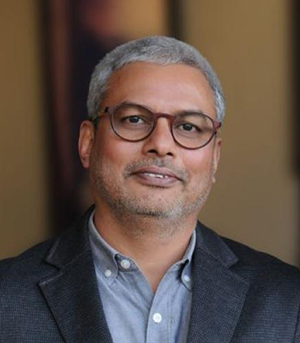This year’s Dean’s dinner was a celebration of our scholarship recipients, outstanding alumni, donors, and college community. To get the awards ceremony started, the 2025 outstanding alumni, Jesse Paris, Dr. Jerry Franklin and Doug Mays, were honored.

Two faculty awards honor the dedication shown by those who support students in the College. The Julie Kliewer Excellence in Mentoring went to Randy Rosenberger. His nominator wrote, “Randy taught me great skills that I applied to earn my dream job and academic success at OSU. He is the reason I am a great leader in my clubs and academics on campus. I owe a lot of my success to Randy.” The Aufderheide Excellence in Teaching went to Dana Warren. His nominator wrote, “Dana cares passionately for teaching and having an impact on his students. He’s always looking for ways to make his teaching styles more engaging. Dana pushes beyond the professional boundary of teaching and strives to connect and help his students in any way he can. I learned a lot from Dana about our natural resources issues and through his knowledge I gained hope for the future of our natural resources.”
Amy Riley, Assistant Dean for Student Success, presented the student scholarship and fellowship awards. She started off by recognizing the officers and members of the student clubs and organizations and the College of Forestry Ambassadors for their work and dedication to the College.
Several individual students were honored for making significant contributions and/or excelling academically during their time in the College of Forestry. The Pack Essay Award award was created several decades ago by Charles Lathrop Pack to encourage sound communication skills for forestry & natural resource professionals. The winner of the Pack Essay Award was natural resources student Alayne Rosenstein, for their essay titled “Architects of Our Own Extinction.” The winner of the 12th Annual Photo of the Year Contest was Hayden Wampler for their photo titled “The Fisherman.”
The College of Forestry is honored and privileged to award graduate fellowships and undergraduate scholarships to deserving new and returning students. These awards are made possible through the generous contributions and continued support from our scholarship and fellowship donors. This year, the College of Forestry’s Scholarship Committee reviewed 419 scholarships applications from new and returning students. From these, 126 undergraduate students were selected to receive scholarship offers totaling $555,300 for the 2025-2026 academic year. There will be an additional round of scholarship awards to complete later this summer for incoming transfer students, and students who applied but were not offered scholarships will remain eligible for potential late awards throughout the school year. We are excited to see the total number of awards continue to increase in the coming months.
College of Forestry fellowships recognize our top incoming and returning graduate students. This year, the committee reviewed 105 graduate student applications from Masters and Doctoral students in four separate rounds. They selected 42 students, both Master- and Ph.D.- level, to receive college fellowships totaling just over $281,000 for the 2025-2026 academic year. Scholarships range in value from $3,000 to $9,000. All students who were able to attend came up in small groups for congratulations with the Dean, pictured below.














